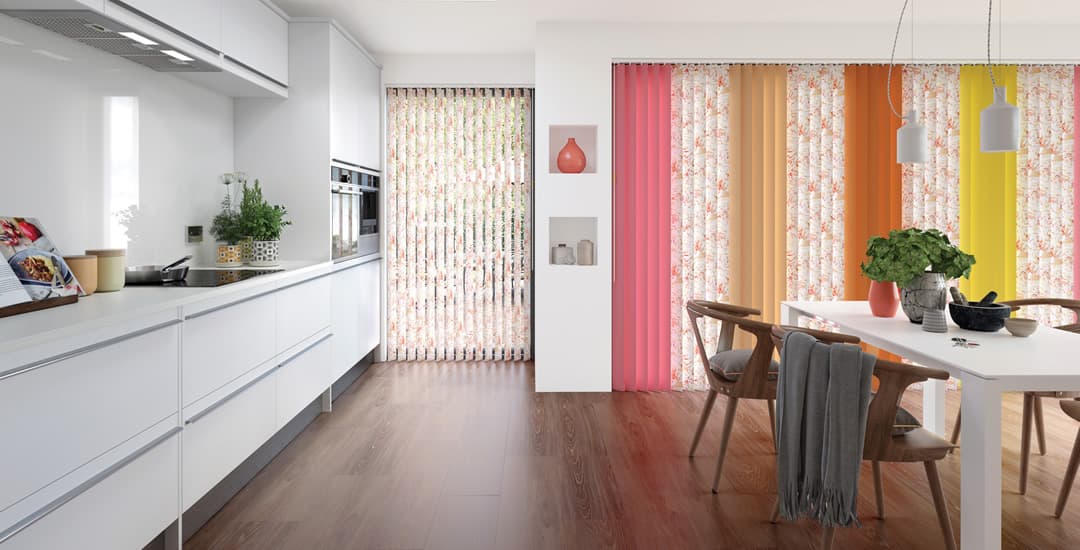
Yes, as long as you stick within some broad guidelines to make sure the end result looks good and works how it should, which largely means thinking about the “match” part just as much as the “mix” part!
Whether you’re mixing blinds out of necessity (usually because some types of windows are limited in terms of the types of blinds that work on them) or to achieve a certain sort of look, this blog post will tell you about using a mixture of blinds in one room, and how to go about this without risking a visit from the interior design branch of the fashion police.
Should all blinds in a room match in terms of their type?
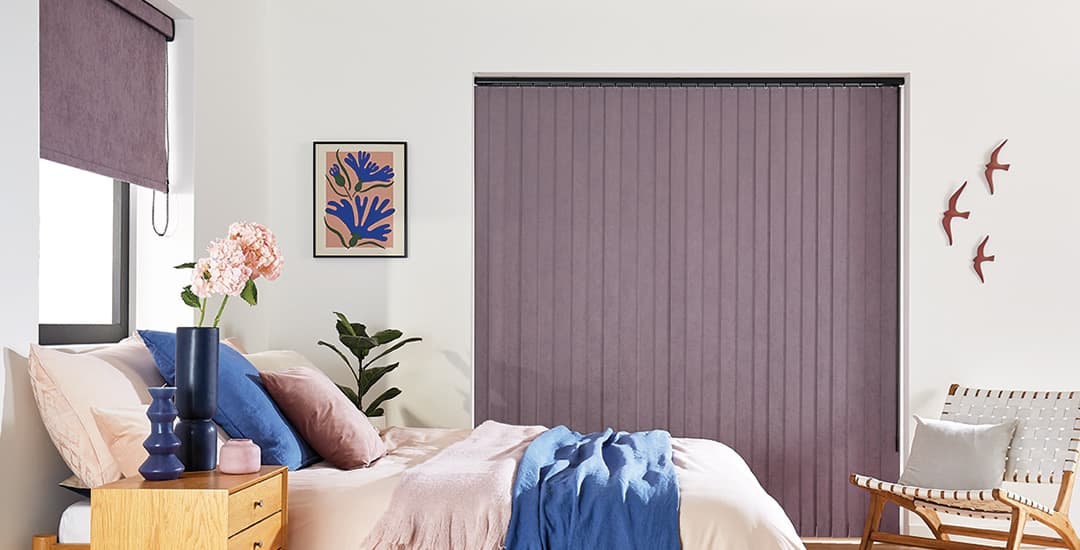
This is usually the first question I get from people looking at what blinds they’re going to get to go where, and why; should all blinds in a room match in terms of their type? No, they don’t have to. Whilst most rooms will have all of the blinds within it being the same type, this isn’t a hard and fast rule and there are a lot of reasons why you might be looking at a mixture.
The most common of these is if you have a set of patio doors/French windows (or another large or tall window) that requires either vertical blinds, or two or more abutted roller blinds to cover it. You might not want this same type of blind on your other windows, and so may have one standalone blind for the big window and a different style on the other windows.
Also, you might have one window that’s a holy terror for creating glare/letting too much directional sun in, particularly if this window is above your desk or seems to target the TV during your daytime viewing. In this case, you might want to get a blind that can be used to filter or diffuse the light from this window, but a different type of blind on the other windows.
Choosing different types of blinds for different windows within the same room can be purely a style choice too; for instance, you might be working with shapes and textures and even perspective, and want to combine, say, a vertical blind and a slatted blind across different windows to achieve a certain finish.
For rooms with windows above one another – perhaps one regular sized window and then smaller windows higher up – you might again have verticals on the larger windows and slatted blinds or another type of horizontal blind on the upper windows for a smooth, balanced visual effect.
Even bay window blinds can call for a mixture of choices, perhaps having roller blinds or slatted blinds on the sides, and a Roman blind in the centre.
I would suggest though that if you are mixing and matching blinds of different types in the same room, you keep them of the same colours or at least, within the same colour spectrum to ensure they look cohesive and planned.
Also, some blinds don’t work together visually, in terms of their styles, so bear this in mind. Venetian blinds, vertical blinds, and day and night blinds are all modern styles of blinds; which means that they don’t tend to look good with traditional or classically styled Roman blinds, nor with roller blinds with a period theme or design.
I also find that Roman blinds and roller blinds together look a little odd, because they have a lot in common in terms of style, being made from one solid sheet of fabric; they simply look a little jarring, or as one of the guys downstairs said, “like one product at two different stages of development.”
The one exception I have seen to this, and I mention it because it achieved a really good end result in direct contradiction of what I just said, was a room that had one large window with a grand Roman blind on it, with several smaller windows that had roller blinds in the same colour as one of the main colours of the Roman.
I find that vertical blinds work with any of the horizontal slatted types of blinds, and also day and night blinds; all of these having slats or stripes. They also work well with roller blinds made of the same material as the vertical.
Can you mix and match blinds in the same room if they’re different colours?
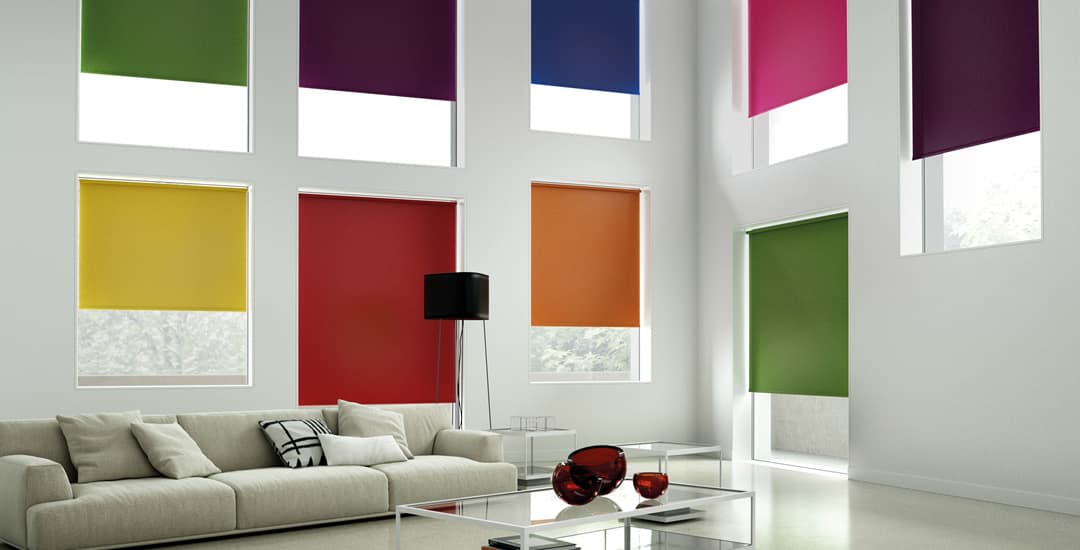
Yes, and you have quite a lot of leeway here before things start going south in the style department. You can either choose different colours that complement or segue into each other, like a colour fade theme or different colours from the same spectrum, or you can contrast quite acutely.
A rich chocolate brown blind and a pale, warm biscuit blind together, for instance, are worlds apart in terms of shade, but an obviously good pair. So too would be various shades of say, peach or blue from the same part of the colour chart.
It’s a good idea to make sure each blind ties into the rest of the room too, in terms of colour, so that the room as a whole looks cohesive and the blinds form a part of it.
Also, shaking things up colour-wise across different blinds is fine, but ensure that all of your blinds are either warm toned or cool toned respectively, otherwise they will tend to look completely unrelated and thrown together, even if they were anything but.
Can you mix and match blinds in the same room if they’re both different types and different colours?
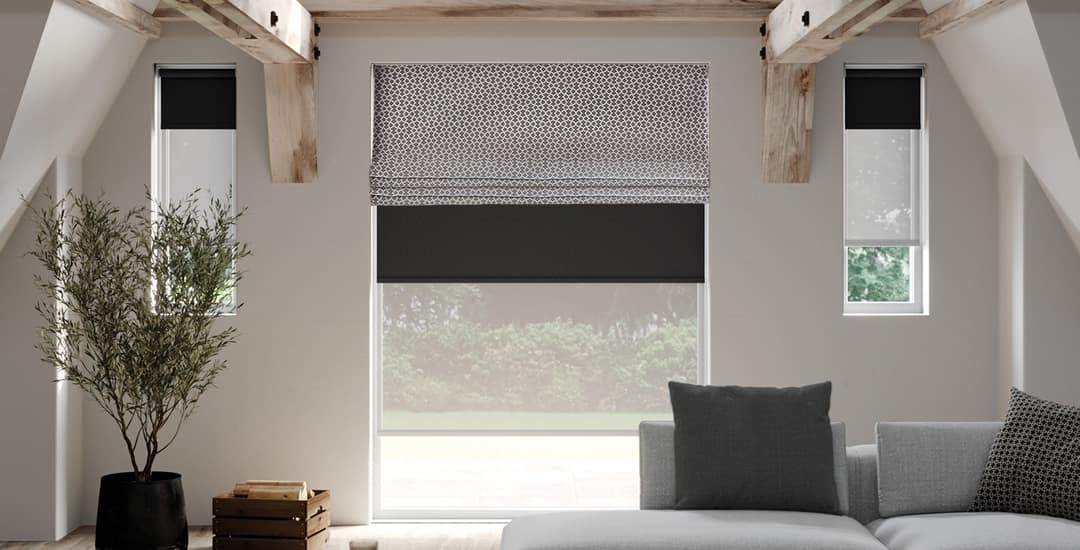
So, can you mix and match blinds in the same room if each blind is both a different type of blind and a different colour too? Yes, but this is a bit more of a balancing act than playing with simply type or colour respectively alone.
If you follow the guidance I wrote above on both what sort of blinds work together and how to make different colours work together and find that what you’re planning or like the look of ticks all of the boxes and works within the wider context of the room as a whole, it’s all good.
Can you use different blinds in the same room if they’re patterned?
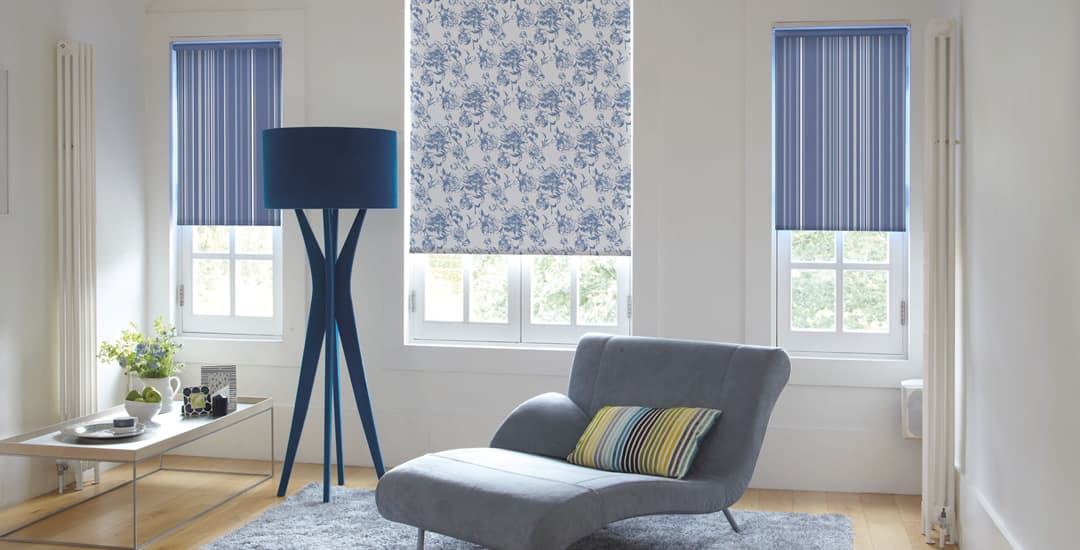
Can you combine two or more blinds that each have a different pattern on them? Such as two Roman blinds or two roller blinds with different patterns? For 99% of cases, I’d say no to this one.
The exception is if you’re working hard to achieve a casual, boho, thrown together sort of look (which often takes more time than creating a formally structured look, ironically), and that involves lots of interplay of mis-matched prints, patchworks, and so on.




